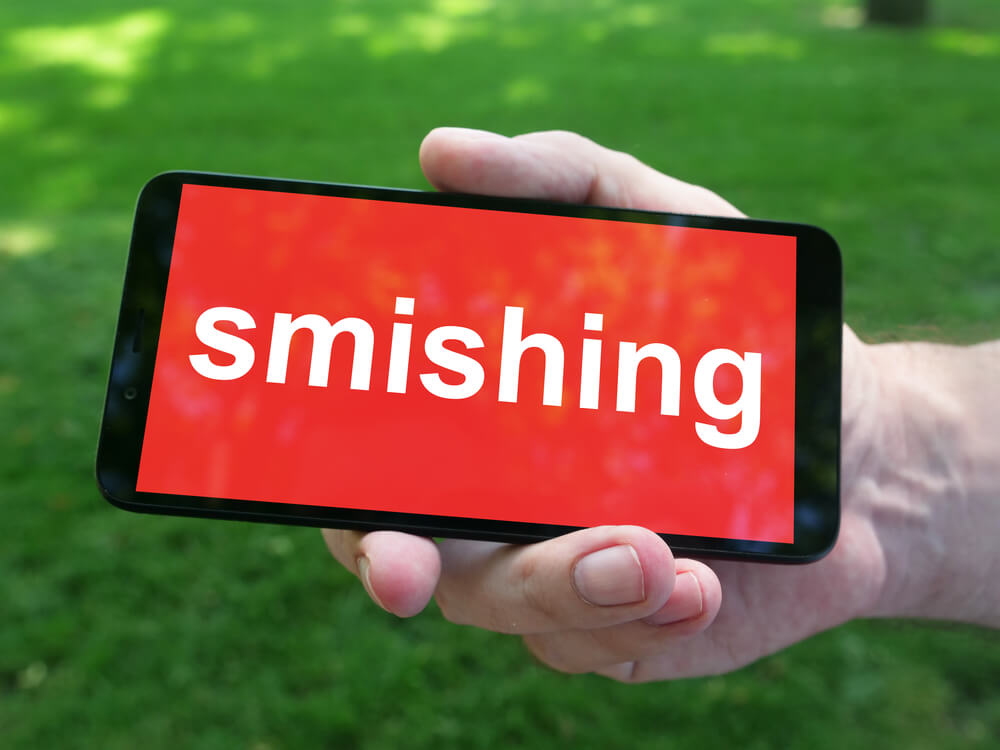Our website contains links to partner sites. If you click from our site to the partner's site and purchase their services there, we will receive a commission for mediation (Find out more information). This form of cooperation does not affect the objectivity of our reviews. With each purchase made through links from our site, you support our editorial office so that we can create quality and useful content in the future. Thank you.
Important notice All our articles are written by real people. They are not artificial texts from a machine.
What is smishing in cyber security

Smishing and vishing are everyday fraud activities that employ SMS and voice to mislead victims into handing over money or confidential information. These two increasingly widespread sorts of “social engineering” attacks have been generating havoc worldwide. Recently, the COVID-19 pandemic compounded the entire issue as many were left without a job.
Smishing Definition
Understanding what is smishing is critical to knowing how to avoid being attacked. Smishing is a phrase that combines short message services (SMS) and phishing. Smishing is classified as a social engineering attack that depends on human trust instead of technology to exploit people.
When fraudsters “phish,” they send fake emails to trick the receiver into clicking on a dangerous link. Instead of email, smishing text messages. These hackers aim to steal your personal information, which they will subsequently use to perpetrate fraud. This usually entails stealing money from you or where you work.
How does Smishing work
Smishing attacks usually take one of two forms: requesting the target to click a hyperlink or responding to an SMS. The strategy utilized in the latter situation is more straightforward: the fraudster dispatches an initial message pretending to be from a specific company and asks the victim to react with personal information.
If the SMS contains any links, the offender has two options for stealing the user’s personal phone data:
- The victim is first taken to a phony website, which is usually quite similar to the supposed official corporate page, where they are asked to fill out a form with personal details.
- The second is that immediately after the victim clicks the link, the malware is downloaded automatically, allowing fraudsters to monitor the victim’s device actions secretly and gain access to sensitive data.
Most SMS phishing attack relies heavily on deception. Because the attacker develops an identity that you may believe, you are more inclined to comply with their demands. Smishing attackers can affect a victim’s decision-making using social engineering techniques. The driving force behind such deception is
- Trust: Cybercriminals eliminate their target’s suspicion by masquerading as respectable individuals. Taking the communication personally, they use SMS text, which reduces a person’s natural defenses against such attacks.
- Context: An hacker can build an effective camouflage by exploiting a situation that is pertinent to the target. The message has a personalized feeling attached to the victim, making it harder to create suspicion.
- Emotion: Attackers can bypass their target’s emotions and urge them to act quickly.
Attackers use these methods to build communications that compel the recipient to act. Typically, the attackers just want the receiver to click on a URL link inside the smishing text messages, which will take them to a phishing tool that will demand personal information. This phishing tool is usually in the form of an application or website that also pretends to be someone else.
Targets are chosen in several methods but most commonly based on their association with a company or a geographic location. Targets can include workers or clients of a specific organization, mobile network subscribers, college students, and even tenants of a specific location.
The camouflage of an attacker is frequently tied to the institution to which they intend to obtain access. It might, however, be any mask that allows them to steal your personal or account records.
An attacker can conceal their genuine contact details using a technique known as spoofing. Smishing attackers may also employ “burner phones” – low-cost, temporary prepaid phones — to hide the attack’s origin. Attackers have been known to employ email-to-text services to hide their phone numbers.
An attacker will execute their attack using the following steps:
- The SMS message “bait” is sent to the targets.
- Deception is used to compromise the victim’s information.
- The desired theft is carried out with the help of the victims’ compromised information.
When an attacker uses your personal information to perform the theft they intended, their smishing campaign is successful. This purpose could involve stealing directly from your bank account, performing identity fraud to open credit cards unlawfully, disclosing confidential corporate data, etc.

How Smishing Attack Spreads
Smishing attacks can be distributed using both standard SMS and non-SMS messaging applications. Due to their deceitful nature, SMS phishing attacks spreads unreported and unnoticed. Smishing deception is bolstered by users’ having unreserved trust in the message without any consideration for safety.
To begin with, most individuals are aware of the dangers of email scams. You’ve apparently learned to be cautious of emails that start with “Hello—check out this link.” The absence of a genuine personal message is usually a major warning signal in email spam scams.
People are less cautious while they are on their phones. Many people believe that their mobile phones are safer than their laptops. However, smartphone security has limitations and cannot always guard against smishing directly.
Whatever tactics are employed, these schemes rely on little more than your confidence and poor judgment to succeed. Consequently, smishing can happen on any mobile device that can send text messages.
While Android devices are the most popular and are a primary target for malicious SMS, iOS devices are also vulnerable. Although Apple’s iOS mobile technology has a high-security reputation, no mobile operating system can prevent you from an attack.
Another way such an attack spreads is by pressing your phone on the go. Therefore, it is possible to click a link in a message when you receive a message requesting for you to redeem a coupon or provide bank details.
Ways to Prevent Smishing Attack
Interestingly, you can prevent a smishing attack from taking place. Everything depends on you – your safety is in your hand. The attacker can only rack havoc if you click or take the bait. While no message should be ignored, adhering to the following ways to protect yourself against any likely attack is crucial.
- Don’t respond to a message if you don’t know the sender
- If the message is urgent, take your time to read it.
- Contact your bank if you are doubtful about the message requesting bank details.
- Use an app to check the number and where it originates
- Never store credit card numbers on your smartphone
- Report smishing text messages to your service providers
- Use multi-factor authentication
Smishing Examples
Bank messages informing the victim of a problem
Money and account issues are, without a doubt, the touchiest subjects for most people. As a result, messages from the victim’s bank stating that a questionable transaction has been discovered or that their credit card has been blocked are common types of smishing.
Notifying a company about a suspicious activity
Many companies now notify if an account is activated from a different device or location to improve user security. Smishing attacks use the same method and notify the victim with suspicious links.
Inviting people to complete a survey
Even in the case of genuine surveys, few people love volunteering their time. As a result, messages frequently offer a prize to persuade the person to click a link. These invitations could include survey invitations to rate a product or a service from a large retailer.
Conclusion
Smishing is a fraud in which cybercriminals deliver an SMS to a person posing as a bank or organization to acquire personal information.
While there is some misconception about the difference between smishing and email phishing, smishing is just phishing using mobile text messages. This article has explored several ways a smishing attack spreads and what to do to prevent such an attack.









